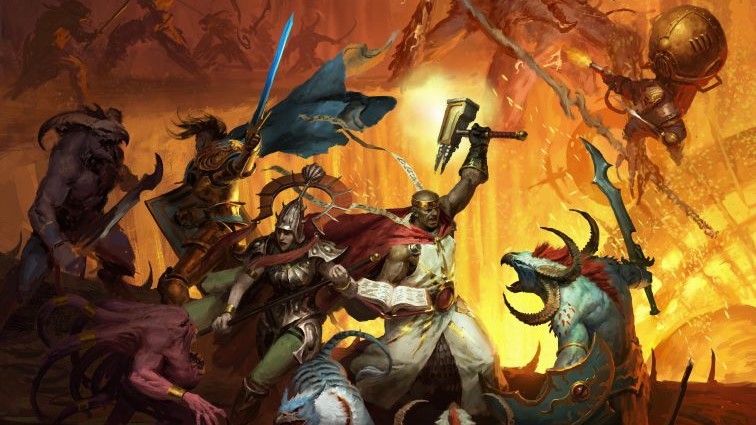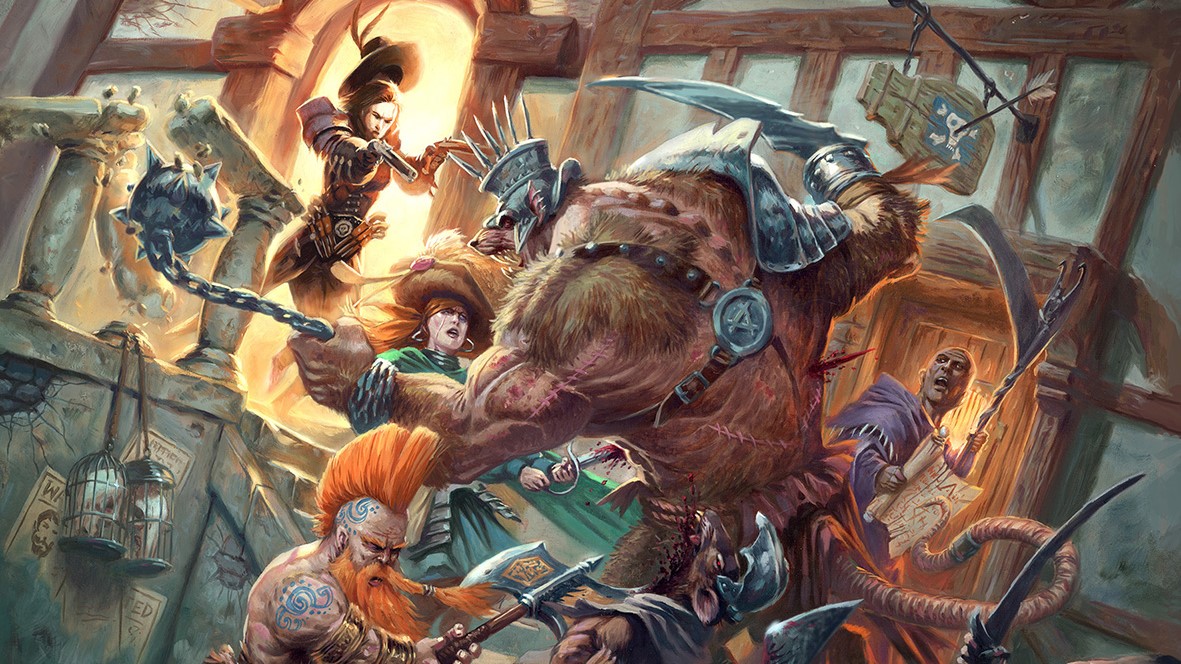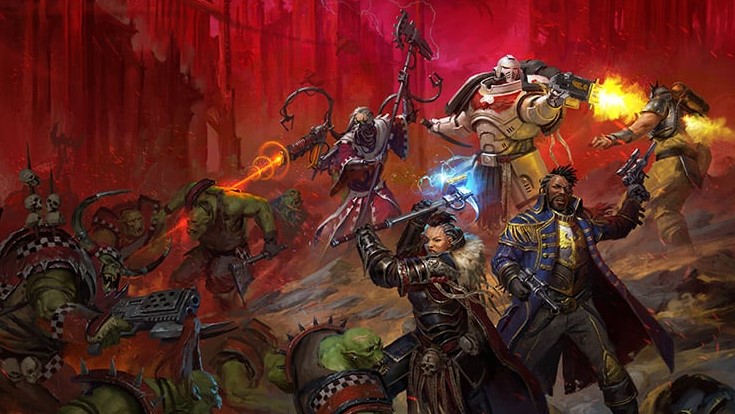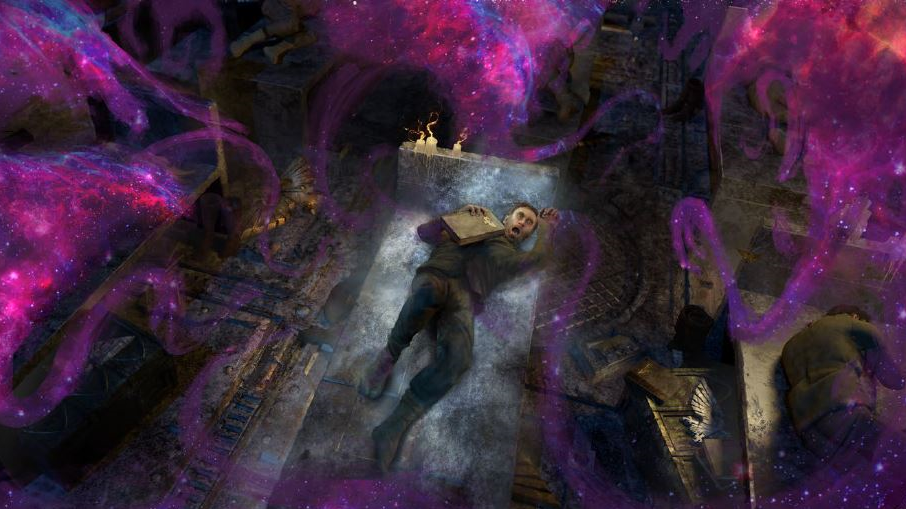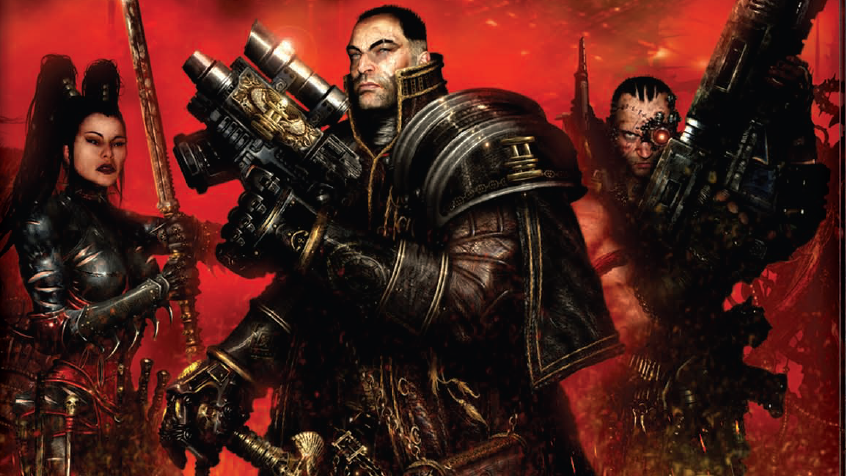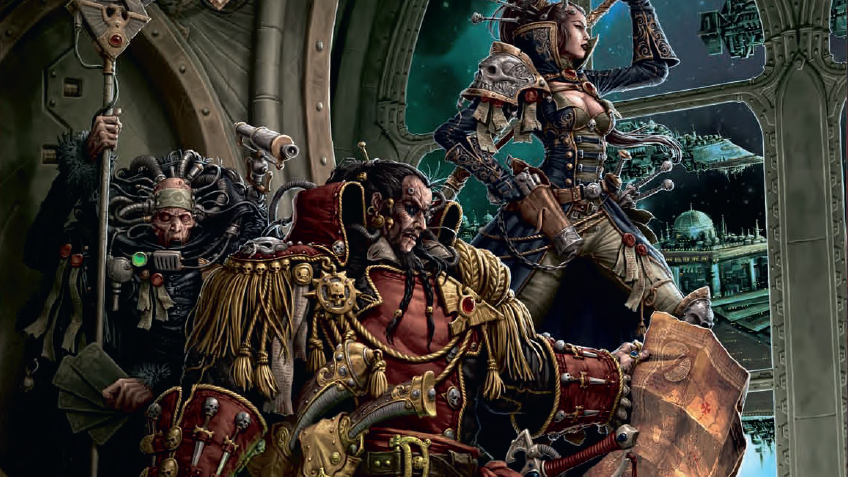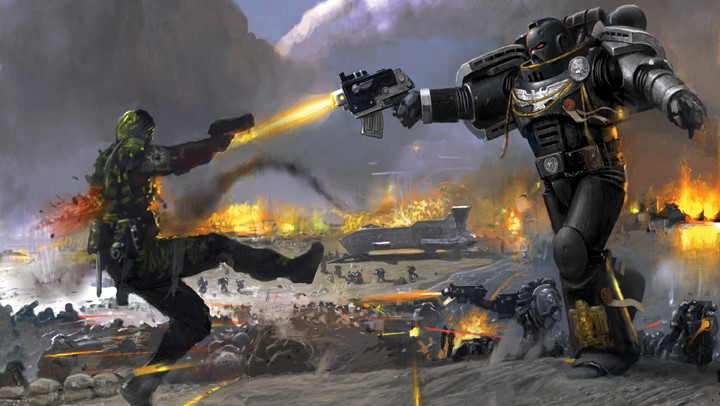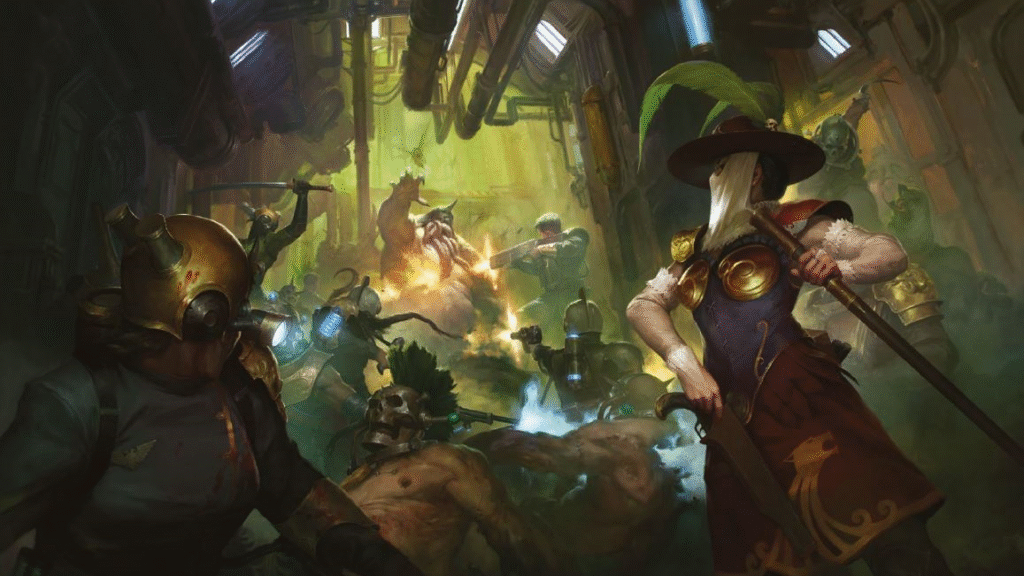
Who makes them?
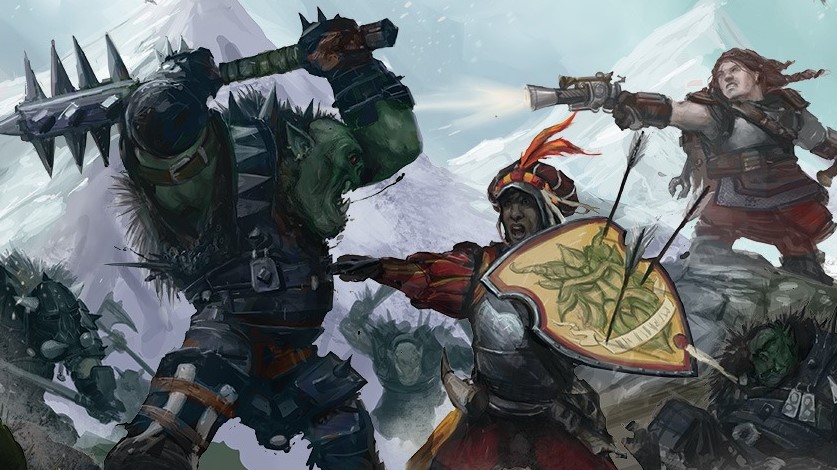
These games aren’t published by Games Workshop themselves. Various companies have held the licenses over the years, including Green Ronin, Fantasy Flight Games, Black Industries, and Hogshead Publishing. But right now, things are pretty simple: Cubicle 7 currently holds the rights to all Warhammer TTRPGs, selling both their own new games as well as older games originally released by others.
Given the age-old connections between wargaming and TTRPGs, it should come as no surprise that there’s lots of role playing to be done in the worlds of Warhammer.
Right now there are more great TTRPGs available set in Games Workshop’s evocative worlds than ever, across Warhammer 40,000, Warhammer Fantasy, and Age of Sigmar. It’s a lovely way for those who love the wargames to get even more out of the hobby, but it’s also a fantastic option for those who don’t have the time for painting minis to dive in to the lore.
Figuring out which game is right for you can be confusing, however, so let me break down what’s on offer, and guide you to the book that kicks off your next amazing campaign.
Warhammer Age of Sigmar
Made for: Epic adventure in a sprawling, mythic fantasy world.
Embracing the grand scale of the Age of Sigmar setting, Soulbound is a game of mighty player characters making their mark on the Realms. A starting party fresh out of character creation can already contain powerful wizards, immortal Stormcast Eternals, and hulking tree men, and easily take on hordes of enemies and towering monsters in battle.
Such epic clashes are supported by a slick dice pool system and a selection of character options that are extensive without being overwhelming. A really excellent set of official campaigns and adventures gives you plenty of material to journey through, too.
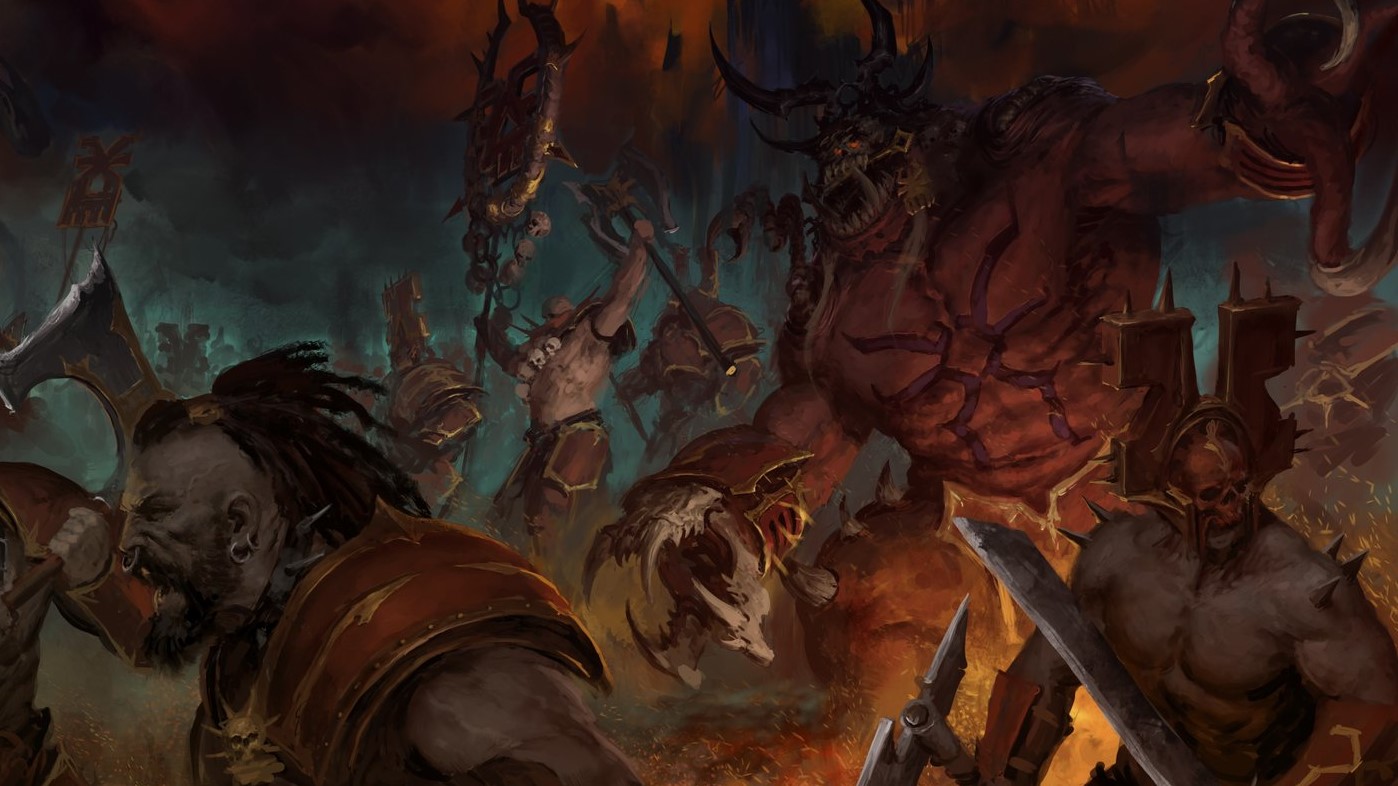
Made for: Despoiling the Realms as a damned group of misfits.
A bit of a mouthful of a name I know, but that’s because Champions of Chaos started life as an expansion for Soulbound, before growing into a full standalone game. As you might expect, it’s all about playing the bad guys—the foul worshippers of the Dark Gods.
It still uses the same core ruleset, but with a selection of new features and mechanics to make it better suited for playing the villains—from new lores of magic to cursed mutations. You can even play as a Skaven.
Warhammer Fantasy
Made for: Underdog stories of peasants and ne’er do wells struggling to survive in a grim fantasy world.
WHFRP 3e
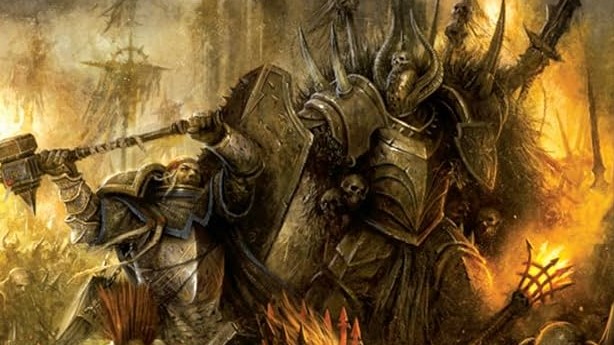
Hold on, I’ve mentioned 2e, and 4e, so what happened to 3e? Well… it’s a bit of an odd duck. An attempt by Fantasy Flight Games to totally change the tone of the game, offering more traditionally heroic adventures using an all-new system, it was much maligned by the fanbase, particularly for its use of custom dice and cards. As far as I can see it’s no longer available anywhere, at least not legally.
At the complete other end of the spectrum from Soulbound is Warhammer Fantasy Roleplay, a game so bleak and low-powered that you’re more likely to play a ratcatcher or a peasant than a trained warrior.
Though a new game from Cubicle 7, this 4th edition is heavily based on the older 2nd edition, and while it offers modern refinements, its d100 system still feels rooted in the past. Whether you find that charming or archaic will depend on your sensibilities, but either way it can be complicated and clunky.
But above all, 4e has preserved the wonderfully grim tone and dark humour of 2e, and if the idea of a game where your muddy, hopeless character faces death around every corner sounds exciting to you rather than depressing, you’ll have a blast.
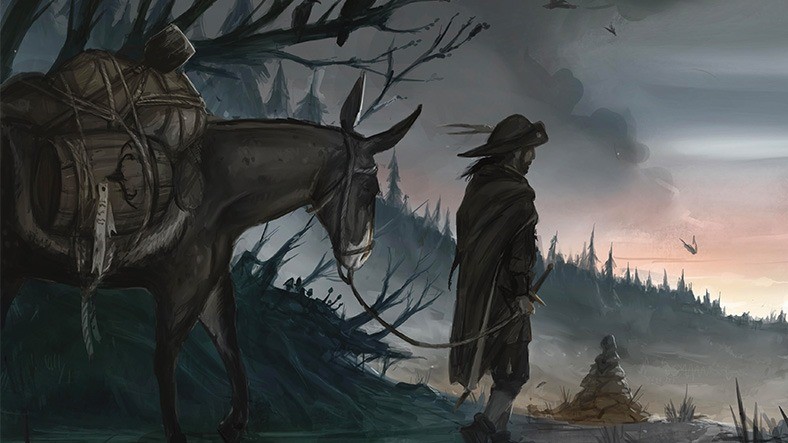
Made for: Pretty much the same thing as WHFRP, but with a more modern, streamlined system.
Cubicle 7’s latest Warhammer Fantasy game moves things back in time a few hundred years, to the setting of Games Workshop’s latest reboot of the tabletop wargame, The Old World. In practice, that doesn’t actually mean too many changes—the technology level is pretty much the same, and most of the factions are around in recognisable forms.
The system, however, has moved forward—it’s a streamlined and reimagined version of the same core ideas as WHFRP, with dice pools instead of d100 rolls. I’m yet to try it for myself, but after years of tearing my hair out at all the maths and jank in WHFRP, the idea of a big overhaul is very appealing.
Warhammer 40,000
Made for: Big damn heroes battling their way across the grimdark universe.
While I’m not sure things ever get truly “heroic” in Warhammer 40,000, Wrath & Glory is certainly geared towards lighter, pulpier adventures than most of the other games in the setting. Through a dice pool system similar to Soulbound, it allows you to tell a really broad spectrum of 40k stories, and there are mechanics for balancing mixed parties—so, for example, an Imperial Guardsman and a Space Marine can fight together without the latter outshining the former.
Arguably, the tone gets a little too light for the setting, especially in the artwork—but if the kind of Warhammer 40,000 you enjoy is larger-than-life heroes with even larger weapons fighting for a ray of hope in the darkness, this is the game for you. It’s also the only 40k TTRPG not based on the old d100 system, which does make it much more accessible and faster to run than its peers.
Made for: Politicking and intrigue as factional agents operating within the sprawling Imperium.
Essentially a spiritual successor to Dark Heresy (see below), and in many ways a close cousin to Warhammer Fantasy Roleplay, featuring a similar d100 system and bleak, oppressive tone. Imperium Maledictum puts the focus on the inner workings of humanity’s empire, casting players as pawns of one of many internal factions, from the Adeptus Mechanicus to the Inquisition to the Imperial Navy.
Like WHFRP, it’s very much a game about playing the underdog, but in this case you’re as much under threat from bureaucracy, politics, and in-fighting as monsters and dark gods. Unfortunately I think that does make it a little dry and impenetrable, and though it does provide some clever updates to Dark Heresy’s rules, I think it lacks its clear focus. More recent supplements have helped in that regard, at least, and certainly if you’re interested in the inner workings of the Imperium, you’d be hard pressed to find a more comprehensive guide.
Made for: Inquisitorial agent cells getting in way over their head on ridiculously dangerous missions.
Imperium Maledictum’s fan-favourite predecessor is just as grim but a little more precise in its premise, casting players as low level acolytes of an Inquisitor, tasked with missions to root out corruption and evil.
Like Warhammer Fantasy Roleplay, Dark Heresy is full of horror so awful and absurd it loops round to being funny. I’m particularly fond of its horrific random tables, mostly used to determine exactly how mangled you are by the specific kind of weapon that just critically hit you.
It’s no longer active but it received a huge amount of support in its day, and though it was primarily developed by Fantasy Flight Games, all those old books are still sold in PDF form by Cubicle 7 today. But this is another game on that creaky old d100 system, and this is it at perhaps its most unwieldy and difficult to parse—proceed with caution.
Dark Heresy spin-offs
You certainly couldn’t fault FFG’s rate of production while it held the Warhammer 40,000 license. Not content to rest on the laurels of Dark Heresy, it was constantly releasing new versions of the game covering different corners of the setting, each with their own library of supplements and adventures, and they’re all still available via Cubicle 7 on DriveThruRPG.
Rogue Trader focuses on the journeys of 40k’s rascally merchant explorers, allowing for more adventurous stories and more diverse parties—even including xenos characters. Deathwatch ups the ante by letting you play as not just Space Marines, but their most elite alien-hunters—though its simulationist approach to the idea means you’ll have to track a whole page of special rules for your genetically-enhanced organs while you’re battling the xenos threat.
Only War is all about the lowly soldiers of the Imperial Guard, and lets you embody not just a squad but the regiment they fight in too. Lastly, Black Crusade lets you leave all that Imperial nonsense behind and embrace Chaos, playing as cultists and Chaos Space Marines. An alluring premise, though slightly undone by the book’s strange assumption that you’ll spend more time hanging out in the Eye of Terror with other weirdos rather than trying to corrupt and destroy Imperial worlds.
All of these use the same overall system as Dark Heresy, with adjustments for their particular style and tone. Generally I’d say the further you get from playing lowly humans, the more the rules start to collapse under their own weight. Only War, for example, is a pretty good fit, simply telling its underdog stories on muddy battlefields rather than in overpopulated hive cities—whereas Deathwatch’s attempts to bend a gritty and deadly system to support superhuman soldiers having never-ending fights result in pretty exhausting sessions.

